calsfoundation@cals.org
Cave City (Sharp and Independence Counties)
| Latitude and Longitude: | 35º56’30″N 091º32’54″W |
| Elevation: | 676 feet |
| Area: | 2.56 square miles (2020 Census) |
| Population: | 1,922 (2020 Census) |
| Incorporation Date: | April 29, 1907 |
Historical Population as per the U.S. Census:
|
1810 |
1820 |
1830 |
1840 |
1850 |
1860 |
1870 |
1880 |
1890 |
1900 |
|
– |
– |
– |
– |
– |
– |
– |
– |
– |
– |
|
1910 |
1920 |
1930 |
1940 |
1950 |
1960 |
1970 |
1980 |
1990 |
2000 |
|
278 |
243 |
296 |
427 |
442 |
543 |
807 |
1,634 |
1,503 |
1,946 |
|
2010 |
2020 |
|
|
|
|
|
|
|
|
|
1,904 |
1,922 |
Cave City is a small community that straddles the northern Independence and southern Sharp County border in north-central Arkansas, having ended up there when a three-mile strip of Independence County was transferred to Sharp County in 1879. For administrative purposes, the town belongs to Sharp County, but it hosts voting stations for townships in both Independence and Sharp counties.
The town takes its name from the large multi-room Crystal River Cave, which is located directly beneath the city. The cave has played a pivotal role in the history of the entire community. For thousands of years, it has served as a temporary shelter, source of water, and a fascinating place to visit. Settlers in the nineteenth century also used the cave for food storage because of its cool temperature.
For many years, a well into the Crystal River was the major source of water—other than collected rainwater—for the entire area. There was a fascination with an “endless” source of water that remained a constant fifty-seven degrees. The limestone cavity is well insulated deep underground and is undisturbed by activities that are more than seventy-five feet above it.
In the early 1800s, the cavity was referred to as “Horn Cave,” named for the family that owned the land above it. By the 1840s, the cave had become an object of fear because of stories of people entering the cave and never being heard from again. But a letter appeared in the Sharp County Record in August 1881 promoting the curative effects of the “Crystal Spring Cave” water. Crystal River Cave was one of the first caverns in Arkansas to be opened for tourists, and the cave was marketed as having medical benefits in the latter part of the nineteenth century. The cave contains at least five rooms, seventy-five to 100 feet below the surface. The river itself rises and falls with the Mississippi River, which is approximately 150 miles to the east. It contains a species of fish that are not only sightless but eyeless.
The area was mostly populated by farms, with the thriving mercantile and cultural center for northeastern Arkansas lying fifteen miles south in Batesville (Independence County). In 1854–55, Elisha Columbus Gray helped establish “The Institute” near his father’s home, where he taught mathematics, Greek, and Latin. The Institute—also known as the Old Institute, Fairfield Academy, and Gray’s Institute—remained in operation as a school until the 1890s. The town of Cave City is not mentioned in tax records until the early 1890s, though there is mention of a “Cave Township.” In 1891, brothers James and Jack Laman announced the creation of the new town of Cave City, which was incorporated approximately sixteen years later on April 29, 1907. The present town incorporates the previous communities of Cedar Grove, Loyal (named because it remained loyal to the Union in the 1860s), and Flat Rock (named in 1858 for the large exposed sandstone outcropping located near the cave’s entrance).
A map from the 1860s identifies the towns of Cedar Grove, Loyal, and Flat Rock and pinpoints “the cave.” Another map also identifies a good road connecting Evening Shade (Sharp County) and Batesville, with the cave pinpointed beside the roadway. Probate records for the 1870s discuss a large mercantile store in the community of Cedar Grove whose inventory included many luxury goods from as far away as Louisville, Kentucky, and New Orleans, Louisiana. Records from 1875 indicate the opening of bids on roadwork from Jacksonport (Jackson County) and Flat Rock.
In the 1870s, the post office was moved from Loyal to the present location of Cave City. Following the general election of 1892, the post office was renamed Cave City on December 16, 1892. By 1896, the town had five general stores, a drug store, a physician, two blacksmith shops, a bakery, a hotel, a jeweler, and twenty-two mail deliveries a week. By 1905, a stagecoach ran daily from Batesville to Evening Shade; the base fare was sixty cents.
An article in the Sharp County Record on January 9, 1896, described Cave City as a splendid summer resort with “the finest cave in Northeast Arkansas containing the finest subterranean lake in the State.” In the early 1900s, a hand pump was installed in the middle of town into the Crystal River eighty feet below, and a large wooden trough was built, which provided water for the community and became a local gathering spot.
The Cave City Progress newspaper was established in 1903. On July 1, 1906, the Bank of Cave City was established; it remains in operation on Main Street, also known as U.S. Highway 167, which saw the installation of its first traffic light in 2000. A movie house was established in 1920 known as “Uncle Billie McGee’s.” Multiple movie houses operated until television arrived in the 1950s. A local landmark, the Crystal River Tourist Court, was established in 1934. These stone structures were built at the cave’s entrance and incorporated crystals, petrified wood, and Indian relics. In 1929, a mule trading barn was established. Mules remained a mainstay on farms until the mid-1940s, when mechanical equipment took their place. Electric lighting arrived in 1937.
Most of Cave City’s present businesses/entities—multiple banks, a grocery store, a discount store, an appliance repair center, a large public school system, and a nursing home—are service oriented. The town now serves as a bedroom community for commuters working in nearby towns and cities, especially Batesville. In December 2016, the Cave City narrowly voted to become a dry township, forbidding the sale of alcohol within its borders.
In 1980, the city began its yearly Watermelon Festival, which is a popular summer event for an area that boasts the sweetest watermelons in Arkansas. Melons have become a lucrative cash crop for the area farmers. Cattle and poultry production also remain successful agricultural enterprises.
For additional information:
A History of Cave City, Arkansas. Mt. Vernon, IN: Windmill Publications, 2001.
Perkey, Gary, ed. A Newspaper History of Cave City, Arkansas: Excerpts from the Sharp County Record, Batesville Guard, Batesville Record, and Newark Journal Newspapers. Batesville, AR: Batesville Genealogical Society, 2003.
Mike Cumnock
Cave City, Arkansas
 Cave City Street Scene
Cave City Street Scene 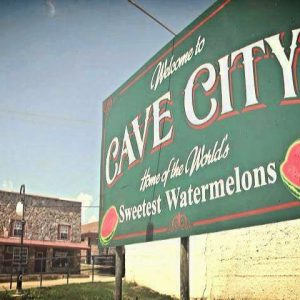 Cave City Welcome Sign
Cave City Welcome Sign 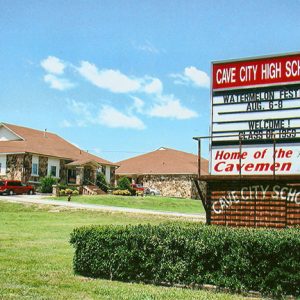 Cave City High School
Cave City High School 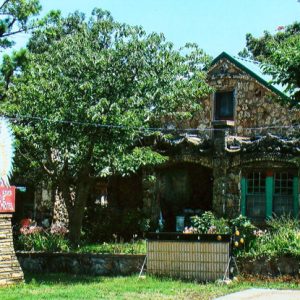 Crystal River Tourist Court
Crystal River Tourist Court 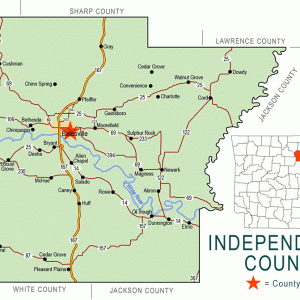 Independence County Map
Independence County Map 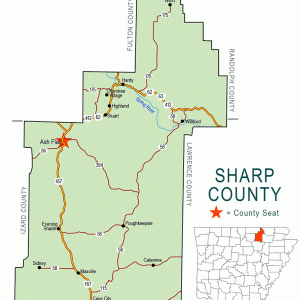 Sharp County Map
Sharp County Map 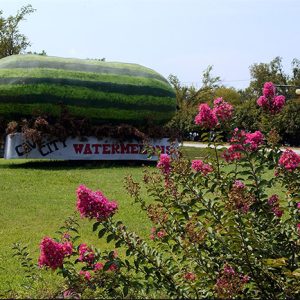 Watermelon Festival
Watermelon Festival 




Comments
No comments on this entry yet.